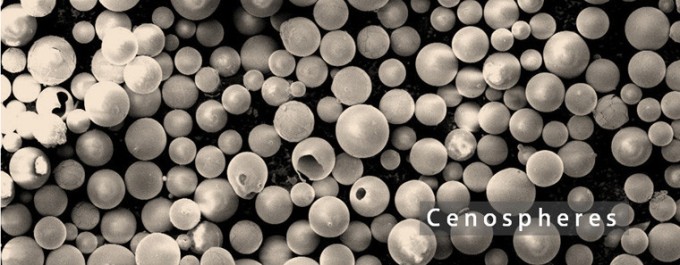Cenospheres
are inert hollow silicate spheres. They are largely used to reduce the
weight of Plastics, Rubbers, Resins, cement etc. used widely as stuffing
lubricants in oil drilling operations under high heat and high-stress
conditions down the hole. Also used as oil well cementing, mud putty and
other related applications. Cenosphere exporters
use it for an extended plastic compounds, as they are well-suited with
plastisols thermoplastics, Latex, Epoxies, Phenolic resins, Polyesters,
and urethanes. The compatibility of Cenospheres with special cement and
adhesives coating and composites have been well recognized. Cenosphere
is broadly used in a range of products, including sports equipment,
automobile bodies, insulations, paints and fire, marine craft bodies,
and heat protection devices.
Cenosphere exporter exports the cenosphere having chemical properties as:
- Silica: 50-60%
- Aluminum: 33-39%
- Iron Oxide: 1.3-5%
- Calcium: 0.5-1.5%
- CO2 Gas: 70%
- Manganese: 0.8-1.5%
- Nitrogen Gas: 30%
What is the type cenosphere exporter use to export?
Fly
Ash: It is one of the residues generated in the combustion of coal. Fly
ash is generally taken from the chimneys of power generation, where the
bottom ash is removed from the foot of the furnace. Before, fly ash was
usually released into the atmosphere with the smoke stack, but today
pollution control equipment has mandated to capture the ashes earlier to
release. Conditional upon the source and character of the coal being
burned, the mechanisms of the fly ash produced vary significantly, but
all fly ash includes generous amounts of silica (silicon dioxide, SiO2)
(both amorphous and crystalline) and lime (calcium oxide, CaO).
ASTM
618F: Fly ash is defined into two classes by ASTM C618- Class F fly
ash, and Class C fly ash. Both the classes differentiate each other on
the basis of the amount of silica, calcium, iron, and alumina present in
the ash. Thus, the chemical properties of the fly ash are generally
influenced by the chemical contamination in the coal burned.
The
burning of harder, older anthracite and bituminous coal typically
produces Class F fly ash, whereas Class C fly ash is produced from the
burning of younger lignite or sub bituminous coal, in addition to having
pozzolanic properties, also has some self-cementing properties.


